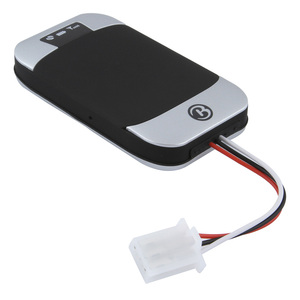
All categories
Featured selections
Trade Assurance
Buyer Central
Help Center
Get the app
Become a supplier

(1659 products available)





















































A car data logger is a device used to record various data parameters of a car for analysis or monitoring purposes. There are different types of car data loggers, each designed to suit various logging needs. Below are some common types of car data loggers:
Power Supply
Car data loggers have two power supply options. The first option is a battery that is typically rechargeable. This battery is responsible for powering the logger, even when the vehicle is turned off. The second option is an external power source that connects to the vehicle's OBD-II port. This external power source draws power from the vehicle's battery and is especially useful for loggers that require more power or need to transmit data in real time.
Data Storage Capacity
Data loggers have different data storage capacities. The minimum storage capacity is 4 GB, which is enough to record data for several hours or days. However, some loggers have larger storage capacities of up to 64 GB or more. This large storage capacity allows the logger to store data for extended periods, such as weeks or months. The stored data can be downloaded for analysis using specialized software.
Sampling Rate
Car data loggers have different sampling rates depending on the model and purpose. The sampling rate refers to how often the logger records data from the sensors. Sampling rates can range from 1 Hz (once per second) to 1000 Hz (1000 times per second). A higher sampling rate provides more detailed data, while a lower sampling rate is sufficient for general monitoring.
Environmental Conditions
Outdoor data loggers are designed to withstand various environmental conditions. For example, they are built to be waterproof, dustproof, and resistant to extreme temperatures. Typically, the operating temperature of a data logger is between -40 and 85 °C. In addition, some loggers are designed to be resistant to UV radiation and corrosive chemicals.
To ensure the longevity and optimal performance of car data loggers, it is important to carry out regular maintenance. Here are some maintenance tips:
With many options available, choosing the right data logger for a car can be challenging. Here are some tips to help in the selection process:
By considering these factors, selecting an appropriate car data logger tailored to specific needs will be easier. This will ensure reliable data logging for informed decisions and analyses.
Below is a step-by-step guide on how to install a car data logger:
Choosing the right data logger
Select a data logger that meets the user's needs. For instance, if someone needs to monitor driving behavior, choose a logger that records speed, braking, and acceleration.
Prepare the vehicle
Data loggers are installed in different places depending on the type. Therefore, it is important to read the manufacturer's instructions and prepare the installation site.
Charging
Some data loggers get their power from the vehicle's OBD-II port, while others have a rechargeable battery. In the case of a rechargeable battery, ensure the battery is fully charged before installing it in the vehicle.
Finding the right location
Locate a suitable position for the data logger, ensuring it will not obstruct driving and will be safe from extreme temperatures or moisture.
Mounting
Mount the data logger securely, ensuring it will not fall or shift while driving. This may involve using adhesive, Velcro, or screws, depending on the type of data logger.
Connecting to the OBD-II port
If the data logger plugs into the OBD-II port, it is crucial to ensure a secure connection. The OBD-II port is usually located under the dashboard, near the steering wheel.
Follow the manufacturer's instructions
It is important to follow the instructions provided in the manual to ensure proper installation and functionality. Each data logger may have unique installation steps.
Connect to a computer or smartphone
Depending on the type of data logger, connect it to a computer or smartphone to download the data. Some loggers may require a USB connection, while others may use Bluetooth or Wi-Fi.
Test the logger
After installation, take a short drive to ensure the data logger is working correctly. Check the data on a computer or smartphone to confirm it is recording as expected.
Q1: What is the point of a data logger in a car?
A1: A data logger in a car is used to record various parameters of the car's performance and environmental conditions. This information can be used for various purposes, including research, development, vehicle testing, and performance analysis.
Q2: Where does data logger information go?
A2: The data recorded by the logger is stored in the logger's memory and can be transferred to a computer or other data analysis equipment via a cable or wireless connection after the logging period is complete.
Q3: Can a data logger be used for a car tracking device?
A3: Yes, a data logger can be used for a car tracking device. Car data loggers can track GPS location, speed, and other parameters, which can be used for vehicle tracking and monitoring performance.
Q4: Can data loggers be used for real-time monitoring?
A4: Yes, data loggers can be used for real-time monitoring of a car's performance and environmental conditions. Users can monitor the car's performance in real time and adjust it in time according to the data provided by the data logger.
Q5: Is it necessary for ordinary car owners to use data loggers?
A5: Data loggers are not necessary for ordinary car owners. However, for some special purposes, such as performance tuning, energy-saving driving training, or research and development, data loggers may provide valuable data and insights.